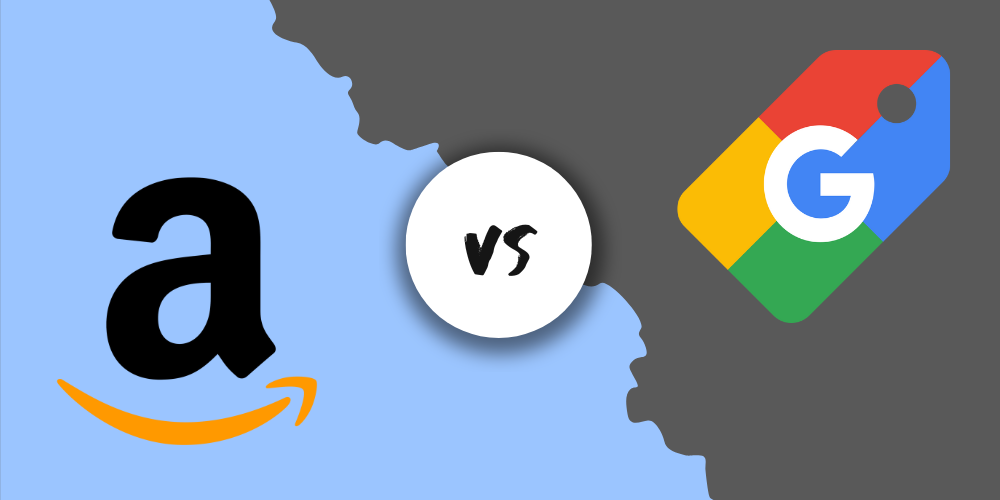When it comes to online shopping, Google Shopping and Amazon are two of the biggest players in the market. Both platforms offer a wide range of products and attract millions of customers every day. Comparing these two giants can help users determine which platform is better suited for their specific advertising needs. In this blog, we will compare Google Shopping and Amazon’s marketplace and analyse the advantages and disadvantages of each platform, helping you decide which one works best for your business.
Background of Google Shopping and Amazon
Google Shopping
Google Shopping is a price-comparison service offered by Google. When users search for a specific product or keyword, Google Shopping displays relevant products with their prices and store information. Initially, Google Shopping only provided organic search results, but it now includes both paid and organic listings. Users can click on these listings to view detailed product information, compare prices across different sellers, and complete their purchase on the merchant’s website.
Amazon
Amazon, on the other hand, needs no introduction. It is the world’s largest online marketplace, offering a vast array of products across various categories. Amazon allows sellers to create listings for their products, manage orders, and handle fulfilment through its platform. Users can search for products directly on Amazon or discover them through personalised recommendations. Amazon Prime, the company’s subscription service, provides additional benefits, such as free next day or two-day shipping (depending on location) as well as access to its streaming service Amazon Prime Video – both big benefits to users.
Product Availability and Selection
Google Shopping
One of the biggest advantages of Google Shopping is its vast product selection. Since the platform is not limited to a specific inventory, it aggregates products from multiple sources all over the web. This means users have access to a wide range of options and can compare prices from different sellers. Google Shopping also integrates with various e-commerce platforms, like Shopify and WooCommerce, ensuring that products from various stores are included in its listings. In order to use Google Shopping you need to have a Google Merchant Center account, and depending on where you live, you may also need to sign up to a Comparison Shopping Service. Find out more about these in our blog: What is a Google Shopping Campaign and how does it work?
Amazon
When it comes to product availability, Amazon excels. With millions of sellers and a robust fulfilment network, Amazon offers an extensive range of products, from everyday essentials to niche items. Additionally, Amazon’s marketplace includes both new and used products, giving users greater flexibility in finding what they need. The sheer number of sellers on Amazon ensures that users can easily find the product they’re looking for, often with multiple options at different price points. Check out this blog by WordStream for more information: 9 Data-Backed Reasons to Sell on Amazon in 2024.
Benefits of Advertising on Google Shopping and Amazon
Google Shopping
1. Increased Visibility: Advertising on Google Shopping can significantly increase the visibility of your products by showcasing them at the top of search results when users are actively looking to make a purchase.
2. Targeted Audience: Google Shopping ads allow you to target a specific audience based on search intent, keywords, and user behaviour, ensuring that your ads reach users who are more likely to convert.
3. Competitive Advantage: By leveraging Google Shopping ads, you can outshine competitors and attract more clicks and conversions, ultimately boosting your sales and revenue.
4. Detailed Performance Metrics: Google Shopping provides detailed insights and metrics on ad performance, allowing you to optimise your campaigns, track ROI, and make data-driven decisions to improve your advertising strategy.
Amazon
1. High Intent Audience: Advertising on Amazon puts your products in front of a high-intent audience, as users on the platform are actively searching for products to purchase, increasing the likelihood of conversions.
2. Sponsored Products Placement: Amazon offers sponsored product ads that appear within search results and product detail pages, giving your products prime visibility to users who are ready to make a purchase decision.
3. Amazon Prime Audience: Advertising on Amazon allows you to reach Prime members, who are known to be loyal and frequent shoppers, leading to potentially higher conversion rates and customer retention.
4. Robust Advertising Tools: Amazon provides a suite of tools for campaign management, keyword targeting, and performance tracking, giving you the ability to optimise your campaigns for better results and ROI.
Conclusion
Advertising on both Google Shopping and Amazon presents unique benefits that can help you reach a wider audience, drive more traffic to your products, and ultimately increase sales. By leveraging the strengths of each platform’s advertising capabilities, you can create targeted campaigns, track performance metrics, and optimise your strategies to maximise the effectiveness of your advertising efforts.
Ultimately, we recommend that you consider what factors are most important to your business before deciding which platform to use. Whether you choose to advertise on Google Shopping, Amazon, or both platforms – understanding the advantages of each can help you make informed decisions to achieve your marketing goals and grow your business online.




